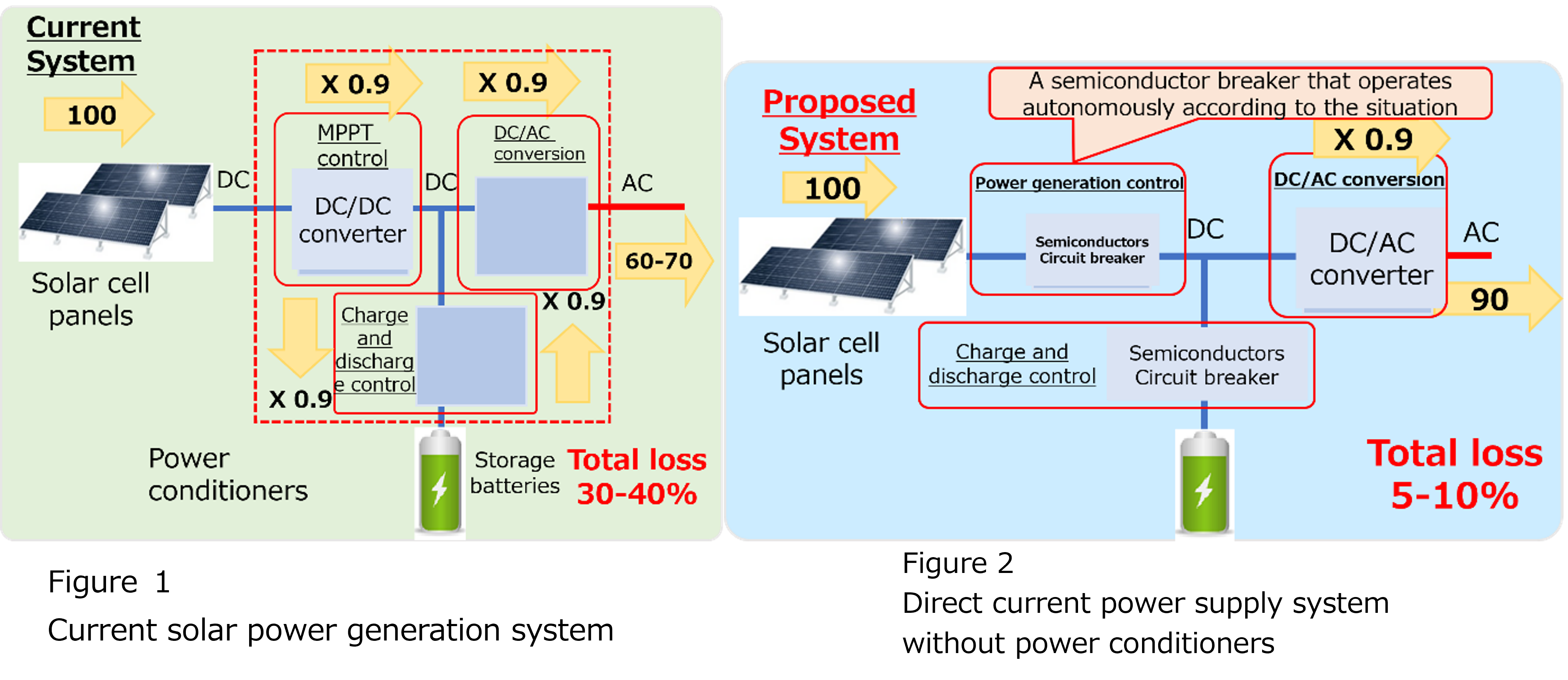

March 1, 2024

EXEO Group, Inc. (head office: Shibuya-ku, Tokyo; Tetsuya Funabashi, President) and the Kyoto Institute of Technology announce that they have developed a technology for supplying direct current power without a power conditioner that will increase the proportion of energy that is renewable energy and energy efficiency and commenced an experiment to demonstrate the technology.
Solar power generation is a key to expanding the use of renewable energy, and currently it is frequently necessary to limit the power generated. It is difficult to supply large amounts of generated energy to the grid any more. This is a challenge that needs to be addressed to increase the proportion of renewable energy. In addition, there is a negative margin between the purchase and sale prices. It is more economically beneficial to consume the energy you generate yourself. At the same time, solar power generation systems only generate electricity during the day. If this does not suit the power consumption activity pattern, it is necessary to store electricity using storage batteries or other technologies.
Figure 1 shows the general configuration of systems which generate electricity from sunlight, store it in storage batteries and supply it according to the load. Devices called power conditioners are generally equipped with three power converters. Their functions include efficiently producing electricity from solar cells, controlling the charging and discharging of storage batteries, and converting between direct current and alternating current according to the load.
Each power converter has a conversion loss of around 5% to 15% in the conversion process. The energy generated and stored undergoes the power conversion processes. This means that even if the conversion efficiency of individual power converters is high, only 60% to 70% of the power generated is available to be used to meet the load after the four power conversion processes.
The newly developed technology hugely improves their energy conversion efficiency. Figure 2 shows the proposed system configuration. Based on the idea of minimizing the number of power converters, this proposed system only has one power converter aimed at adjusting the power output according to the load. The solar cells, the storage batteries and other components are interconnected in a direct current system. With the other power converters are removed, a technology adjusting the number of series-parallel solar cell panels to match the storage batteries in the construction stage using a low-loss semiconductor breaker to control the system when operating has been developed. It is believed this technology will massively improve energy efficiency.
It is announced that the demonstration experiment was started using a recently prototyped direct current power supply system without a power conditioner.
A report on this technology will be presented at the national conference of the Institute of Electrical Engineers of Japan (Tokushima University) that will start on March 14, 2024.

【Contact for inquiries】
Public Relations Team, Corporate Communication Unit, EXEO Group, Inc.
TEL. +81-3-5778-1075 E-mail:contact@en2.exeo.co.jp